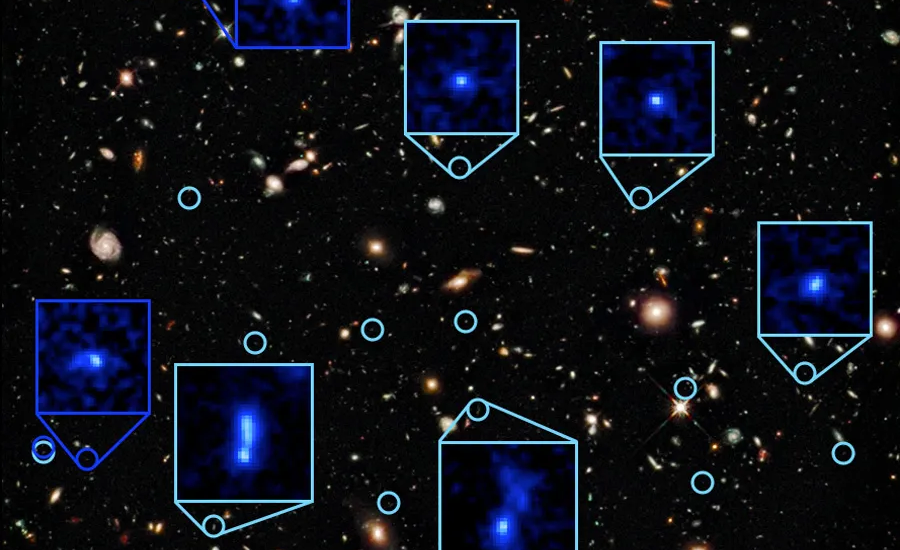The boundless expanse of the cosmos has always fascinated humanity, with galaxies serving as the building blocks of the universe. Recent advancements in technology and space exploration have granted us unprecedented access to the mesmerizing beauty and complexity of these celestial entities. Here, we unveil five innovative images of galaxies, each offering a unique glimpse into the mysteries of the cosmos.
The Whirlpool Galaxy (M51):

Captured by the Hubble Space Telescope, the image of the Whirlpool Galaxy showcases its spiral arms in stunning detail. What sets this image apart is the use of advanced imaging techniques, including multi-wavelength observations, to reveal intricate structures within the galaxy.
This innovative approach has unveiled previously unseen features, such as dust lanes, star-forming regions, and even the faint glow of companion galaxies interacting with M51. Such detailed observations provide valuable insights into the dynamics of galactic evolution.
The Andromeda Galaxy (M31):

Utilizing cutting-edge adaptive optics technology, astronomers have obtained a high-resolution image of the Andromeda Galaxy, our nearest galactic neighbor. This image surpasses previous visualizations by offering unprecedented clarity and detail.
By correcting for atmospheric distortions, adaptive optics allow astronomers to resolve individual stars within Andromeda’s densely packed core. This level of precision offers invaluable data for studying stellar populations, star formation rates, and the galaxy’s overall structure.
The Hubble Ultra-Deep Field (HUDF):

The Hubble Ultra-Deep Field image represents a revolutionary leap in our understanding of the early universe. By pointing the Hubble Space Telescope at a seemingly empty patch of sky for an extended period, astronomers captured light from some of the oldest and most distant galaxies in existence.
This innovative approach revealed thousands of galaxies, each representing a snapshot of cosmic history billions of years ago. The HUDF image not only deepened our understanding of galaxy formation and evolution but also inspired awe and wonder at the vastness of the cosmos.
The Sombrero Galaxy (M104):

In a striking blend of art and science, astronomers have produced a breathtaking composite image of the Sombrero Galaxy. Combining data from ground-based telescopes and space observatories, this image presents M104 in unprecedented detail and depth.
By overlaying multi-wavelength observations, astronomers can study the distribution of gas, dust, and stars within the galaxy, offering insights into its formation and evolutionary history. The Sombrero Galaxy’s distinctive appearance, with its prominent dust lane and bright central bulge, makes it a captivating subject for study and observation.
The Antennae Galaxies (NGC 4038/4039):

Through innovative imaging techniques, astronomers have captured a mesmerizing view of the Antennae Galaxies, a pair of interacting spiral galaxies in the constellation Corvus. This composite image combines data from optical, infrared, and radio telescopes to reveal the complex dynamics at play.
The Antennae Galaxies are undergoing a dramatic collision, triggering intense star formation and producing spectacular tidal tails of gas and dust. By studying such galactic mergers, astronomers gain valuable insights into the processes driving galaxy evolution and the formation of new stars.
These five innovative images of galaxies represent a testament to human ingenuity and the relentless pursuit of knowledge about the cosmos. Through advancements in technology and collaboration among astronomers worldwide, we continue to push the boundaries of our understanding, unlocking the secrets of galaxies near and far. As we gaze upon these mesmerizing cosmic vistas, we are reminded of the profound beauty and complexity of the universe we inhabit.





